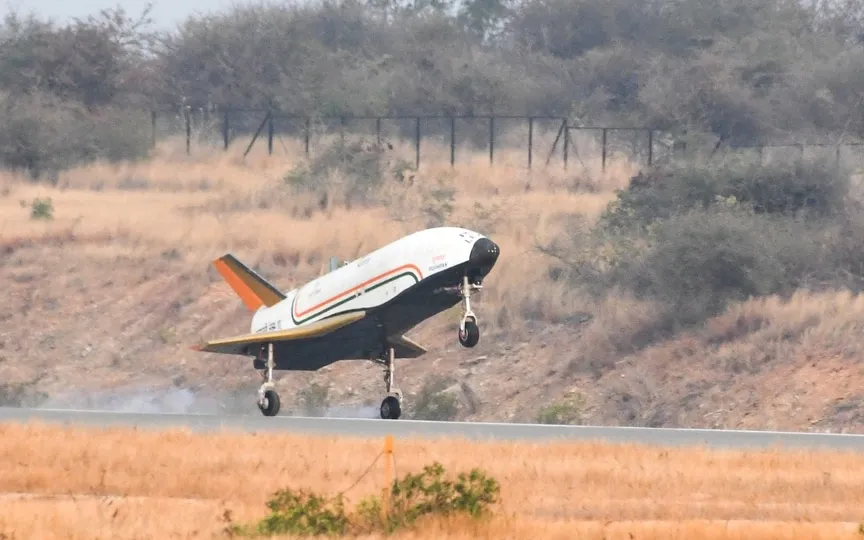ISRO launches Pushpak Viman, a Swadeshi space shuttle, marking a significant move into reusable rocket technology
ISRO has reached a major milestone by successfully launching and landing the Pushpak viman, a winged rocket the size of an SUV that is commonly referred to as the “Swadeshi space shuttle.” The test, which took place in Karnataka, involved the precise landing of the Pushpak viman on a runway after being released from an Air Force helicopter. This achievement represents a significant step forward in India’s efforts to enter the reusable rocket market, indicating a promising development in the country’s space exploration initiatives.
ISRO chief S Somanath expressed satisfaction with the results, describing them as “excellent and accurate”, once again showcasing the agency’s technical expertise and competence. The purpose of the mission was to simulate the approach and rapid descent conditions of a Reusable Launch Vehicle (RLV) returning from space, and Pushpak demonstrated its capabilities with excellent accuracy.
ISRO’s autonomous landing capabilities
The successful landing of the Pushpak viman, even after being released from the nominal attitude, demonstrated its independent landing capabilities. Lifted by an Indian Air Force Chinook helicopter, the rocket autonomously navigated to the runway and made the necessary cross distance corrections before landing. Precise landing was achieved by a combination of brake parachute, landing gear brakes and nose wheel control system.
This successful trial marked Pushpak’s third flight, demonstrating its robotic landing capabilities in complex scenarios. Although operational deployment may take years, Pushpak represents India’s bold attempt to make space more affordable and sustainable. ISRO’s goal is to make the launch vehicle’s upper stage reusable, reducing costs and minimizing space junk. Potential applications for Pushpak include refueling satellites in orbit and retrieving satellites for refurbishing.
State investments
Named after the mythical Pushpak Viman from the Ramayana, the project began a decade ago with a dedicated team of engineers and scientists. The 6.5-meter aircraft-like craft weighs 1.75 tons and is equipped with small thrusters for precise navigation during landing. The government’s investment of over ₹ 100 crore highlights the importance of this project in India’s space aspirations.
The success of Pushpak viman adds another chapter to ISRO’s legacy and positions India as a key player in the global space arena.




